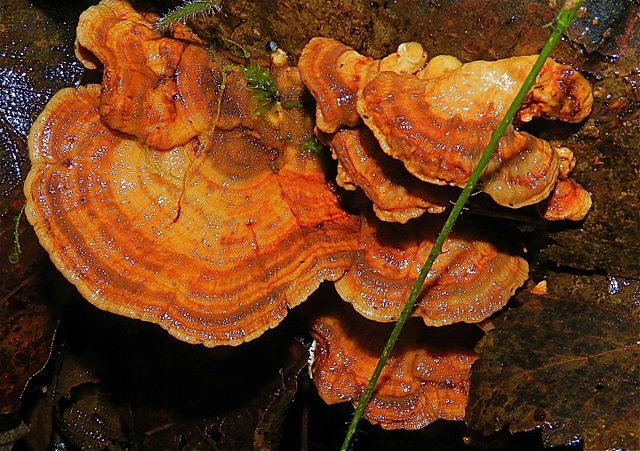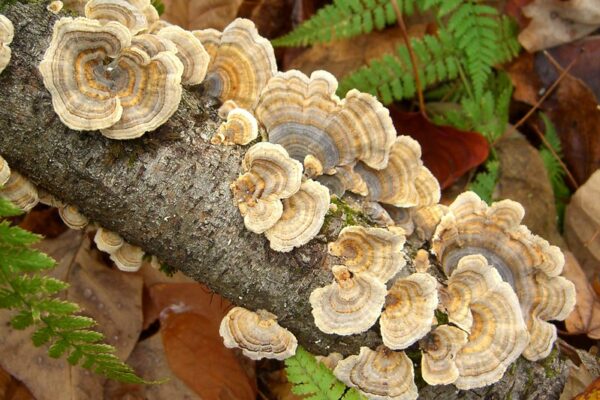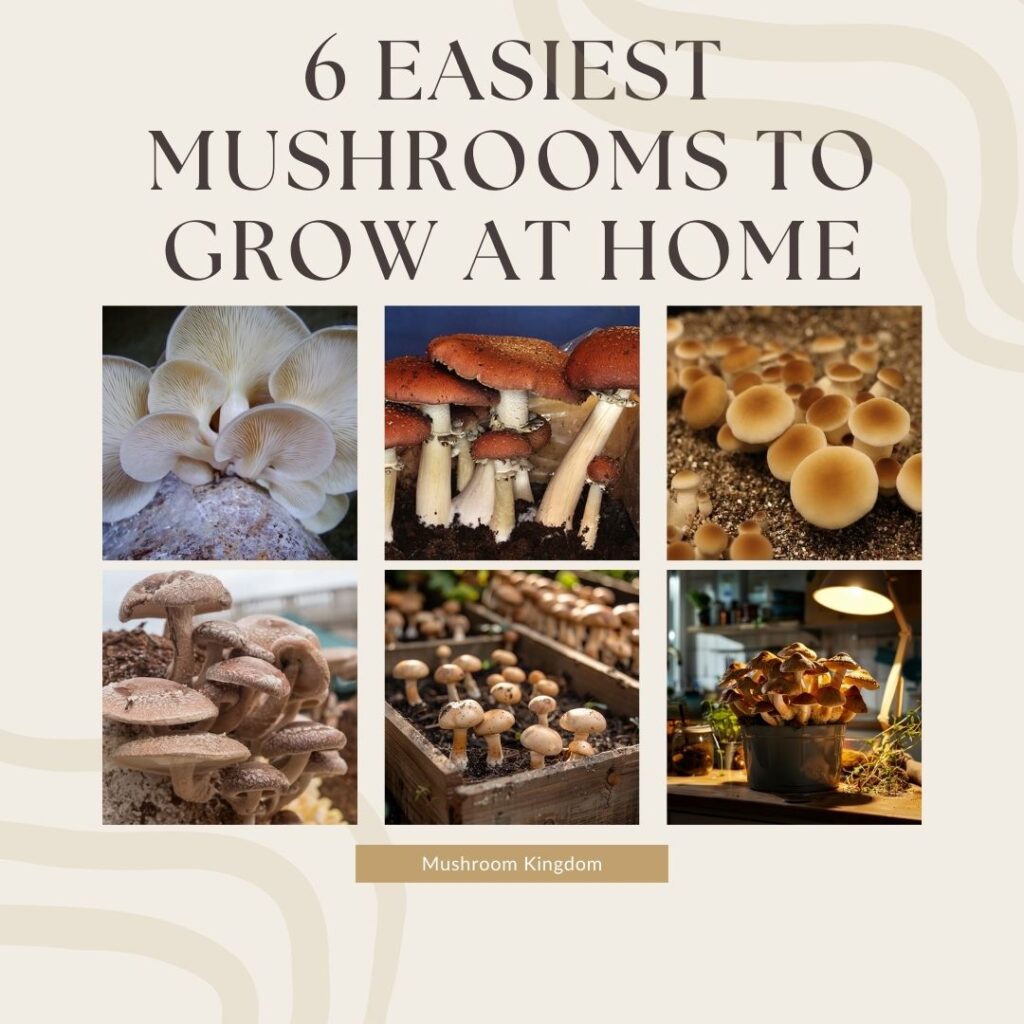Turkey Tail, scientifically known as Trametes versicolor, is a common polypore mushroom found on decaying hardwood trees in forests worldwide.
Recognized for its distinctive fan shape and concentric, multicoloured zones, it resembles the tail feathers of a turkey.
How to Identify Turkey Tail Mushrooms In The Wild?
To identify Turkey Tail mushrooms in the wild, look for small, fan-shaped fungi growing on decaying hardwood with concentric zones of various colors and a velvety texture. They have a smooth underside with tiny pores and produce a white spore print.

Here is a detailed explanation
- Look for the right habitat: Turkey Tail mushrooms grow on decaying hardwood logs and stumps. They are commonly found in forests, especially on oak, beech, and maple trees.
- Observe the shape and size: These mushrooms have a distinctive fan or rosette shape. They are small to medium-sized, typically 1–4 inches in diameter.
- Check the colors and patterns: Turkey Tail mushrooms display a striking array of colors, often including shades of brown, red, orange, blue, and white. Their surface has concentric zones of varying colors, giving them a striped, feather-like appearance.
- Feel the texture: The surface of the cap is velvety or fuzzy to the touch, while the underside is smooth and has tiny, closely-packed pores instead of gills.=
- Note the attachment: The mushrooms grow in overlapping clusters or tiers, attached directly to the wood without a distinct stem.
- Examine the spore print: If necessary, take a spore print by placing the mushroom cap pore-side down on a piece of paper for several hours. Turkey Tail mushrooms produce a white spore print.
Where Does It Grow?
Turkey Tail mushrooms grow in deciduous forests across the world, including North America, Europe, and Asia.
They thrive on decaying hardwood. This particularly includes oak, beech, and maple, and are often found on fallen logs, stumps, and branches in moist, shaded environments.
These mushrooms prefer temperate climates but can adapt to a range of environmental conditions, often appearing in wooded areas with high humidity and abundant organic matter.
Different Variations
Turkey Tail mushrooms exhibit considerable variations in their appearance, primarily in color and pattern.
While the classic form of Trametes versicolor features concentric zones of brown, red, orange, blue, and white, other variations can display different color combinations such as shades of grey, tan, and black.
Also, there are several related species within the same genus, such as Trametes hirsuta and Trametes pubescens, which share some characteristics with Turkey Tail but differ in aspects like texture and specific coloration patterns.
These variations are influenced by environmental factors, including the type of wood they grow on and the climate conditions.
Is Turkey Tail Edible?
Yes, Turkey Tail mushroom is edible, but it is not typically consumed for its taste or texture. Instead, they are widely used in teas, tinctures, and supplements due to their medicinal properties, particularly for their potential immune-boosting and anti-cancer benefits.
As a result, most people who forage Turkey Tails in the wild would later dry them out first. Then, they would break it into a powder and consume as a supplement, or tea, or add it to foods such as soups and salads.
What Are The Health Benefits of Trametes Versicolor?
Turkey Tail mushroom provides several health benefits due to its rich content of polysaccharopeptides like PSK (polysaccharide-K) and PSP (polysaccharopeptide).
These compounds boost the immune system by enhancing the activity of immune cells. Also, Turkey Tail mushrooms support gut health by promoting the growth of beneficial gut bacteria.
They also show potential in enhancing cancer treatment, as they can improve the body’s immune response and reduce the side effects of chemotherapy.
Furthermore, antioxidant properties are also present. These properties protect cells from damage and help reduce inflammation.
Overall, incorporating them into your diet can contribute to better immune function, gut health, and overall well-being.
How To Make A Turkey Tail Tea?
To make Turkey Tail tea, you need dried Turkey Tail mushrooms and water. Optionally, you can add honey, lemon, or other herbs for flavour. Here is the entire process:
- Prepare the Mushrooms: Clean the dried Turkey Tail mushrooms to remove any debris. Break them into smaller pieces to increase surface area.
- Boil the Water: Bring a pot of water to a boil. For every cup of water, use about one tablespoon of dried Turkey Tail mushrooms.
- Simmer the Mushrooms: Add the broken pieces of Turkey Tail mushrooms to the boiling water. Reduce the heat and let it simmer for at least 30 minutes to an hour. For a stronger tea, you can simmer it for up to two hours.
- Strain the Tea: After simmering, strain the liquid into a cup using a fine mesh strainer or cheesecloth to remove the mushroom pieces.
- Enhance the Flavor: Add honey, lemon, or any other preferred flavourings to the tea.



